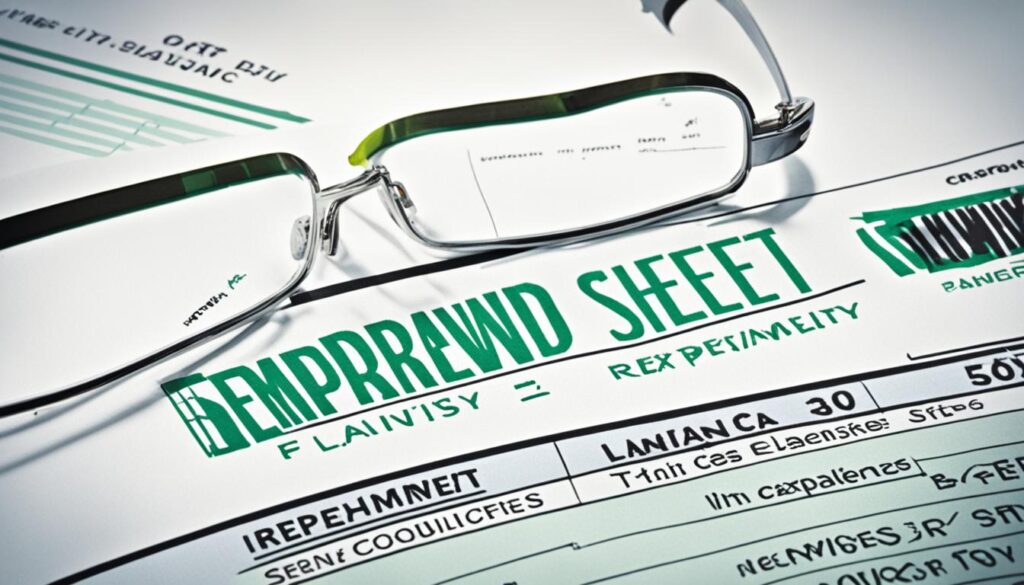Revolving loan facilities are a type of credit facility designed to meet the working capital needs of borrowers. Unlike traditional term loans, revolving loan facilities offer greater flexibility, allowing borrowers to withdraw and repay funds within a pre-approved maximum limit. This type of credit facility grants businesses the ability to access funds as needed, only paying interest on the amount borrowed.
The size of the facility is determined by the lender based on the borrower’s creditworthiness, and the interest charged is typically based on the prime rate or LIBOR. Repayment terms and conditions are established through a mutually agreed-upon agreement between the borrower and the lender.
Revolving loan facilities provide businesses with a flexible funding option that can be used for managing cash flow, funding working capital needs, and supporting growth initiatives. By understanding the key features and benefits of revolving loan facilities, borrowers can effectively leverage this financing option to support their business objectives.
Key Takeaways:
- Revolving loan facilities allow borrowers to access a line of credit for their working capital needs.
- Borrowers can withdraw and repay funds within an agreed-upon maximum limit.
- Interest is charged only on the amount borrowed, providing flexibility and cost-effectiveness.
- The size and interest rate of the facility are determined based on the borrower’s creditworthiness.
- Revolving loan facilities offer businesses a flexible funding option for managing cash flow and funding growth initiatives.
Also Read : The Role Of Loan Officers Unraveled: Definitions, Duties, And Rewards
Understanding Revolving Loan Facilities: Key Features and Benefits
Revolving loan facilities offer businesses a flexible funding option that can be used for various purposes, such as managing cash flow, funding working capital needs, or financing growth initiatives. These credit facilities provide borrowers with a revolving line of credit, which means they have access to a specific amount of funds. The borrower can drawdown or withdraw funds from the credit line as needed, up to the maximum limit set by the lender.
One of the key benefits of revolving loan facilities is the flexibility they offer. Businesses can use the funds for different purposes and only pay interest on the amount they have borrowed. This means that businesses have the freedom to utilize the credit line when it aligns with their specific funding requirements without incurring unnecessary interest costs.
The size of the facility and the interest rate are determined based on the borrower’s credit history, credit rating, and overall creditworthiness. Lenders assess the borrower’s creditworthiness to ensure that the revolving loan facility offers a fair risk-reward balance for all parties involved. This allows lenders to provide competitive rates and tailored funding options to businesses that demonstrate good creditworthiness.
Revolving loan facilities are a type of credit facility that provides businesses with a flexible and convenient funding solution. By offering a revolving line of credit, businesses can access funds as needed and only pay interest on the amount they have borrowed, making it an attractive funding option for various enterprises.
Also Read : Soft Loans Unveiled: An Insightful Analysis Of Pros And Cons
Benefits of Revolving Loan Facilities:
- Flexibility: Businesses can use the funds for various purposes, such as managing cash flow or financing growth initiatives.
- Controlled Borrowing: Borrowers have the freedom to drawdown or withdraw funds as needed, up to the maximum limit, ensuring they do not borrow more than necessary.
- Interest Savings: Borrowers only pay interest on the amount they have borrowed, allowing them to save on interest costs compared to traditional loans.
- Creditworthiness-Based Rates: The facility size and interest rate are determined based on the borrower’s credit history, credit rating, and overall creditworthiness, resulting in competitive rates for financially strong businesses.
Overall, revolving loan facilities provide businesses with a customizable and cost-effective funding option. By utilizing a credit line that revolves, businesses gain access to the necessary funds when they need them, while only incurring interest costs on the funds they have borrowed.
Also Read : Exploring Loan Sharks: Definitions, Realities, And Contrasts With Payday Lenders
Pros and Cons of Revolving Loan Facilities
Revolving loan facilities offer businesses a range of benefits, but there are also some drawbacks to consider. Understanding the pros and cons can help borrowers make informed decisions about this financing option.
Advantages of Revolving Loan Facilities
One of the key advantages of a revolving loan facility is that it provides businesses with access to a committed credit facility. This means that they have a predictable source of funding that they can rely on when needed. Whether it’s for managing cash flow, funding working capital needs, or financing growth initiatives, the availability of a revolving credit facility provides businesses with greater flexibility and peace of mind.
Another advantage of revolving loan facilities is that borrowers only pay interest on the amount they have borrowed, giving them more control over their cash flow. This means that they can access funds as and when they need them, without accruing unnecessary interest on unused balances. The ability to drawdown or withdraw funds as needed offers businesses the flexibility to meet their financial obligations and seize growth opportunities efficiently.
Also Read : Plan Your Pool Finances: Monthly Payment Calculator For Pool Loans
Disadvantages of Revolving Loan Facilities
While revolving loan facilities offer many advantages, there are also some potential disadvantages to consider. One disadvantage is that some lenders may charge a commitment fee for making the credit facility available to the borrower, regardless of whether they utilize the funds. This fee is typically a percentage of the unused portion of the credit facility and serves as compensation for the lender’s commitment to provide ongoing access to funds.
Additionally, businesses must repay the loan according to the terms and conditions set by the lender. This may include making fixed payments or paying off the entire amount borrowed within a specified time frame. Failure to meet these repayment obligations can result in additional fees and penalties, negatively impacting the borrower’s financial position.
Overall, revolving loan facilities provide businesses with valuable benefits such as flexibility and predictable funding. However, it’s important for borrowers to carefully consider the commitment fee and repayment terms before entering into an agreement. By evaluating the pros and cons, businesses can make informed decisions about whether a revolving loan facility is the right financing option for their needs.
Also Read : Opening Doors To Financing: Personal Loan Eligibility with Fair Credit
How to Qualify for a Revolving Loan Facility
Qualifying for a revolving loan facility requires businesses to have a good credit score and a positive credit history. Lenders assess the borrower’s creditworthiness by reviewing their credit score, which reflects their ability to repay debts on time. A good credit score demonstrates responsible financial behavior and increases the likelihood of being approved for a revolving loan facility.
Lenders also consider the borrower’s credit history, including their past borrowing behavior and any outstanding debts. A positive credit history indicates a track record of managing credit responsibly. Businesses with a solid credit history are more likely to be eligible for a revolving loan facility, as it demonstrates their ability to handle financial obligations.
In addition to creditworthiness, some lenders may require businesses to provide collateral or a personal guarantee to secure the loan. Collateral can be an asset with sufficient value that the lender can claim in case of default on the loan. A personal guarantee involves the business owner or principal assuming personal responsibility for repayment if the business defaults.
Benefits of a Good Credit Score and Credit History:
- Increased chances of loan approval
- Access to more favorable loan terms and interest rates
- Ability to borrow larger amounts
Overall, demonstrating good creditworthiness and a positive financial track record are essential for qualifying for a revolving loan facility. Maintaining a good credit score, managing debts responsibly, and establishing a solid credit history are key steps businesses can take to enhance their eligibility for this flexible funding option.
| Credit Score | Credit History | Eligibility for Revolving Loan Facility |
|---|---|---|
| Excellent (750+) | Pristine with no missed payments | Highly eligible |
| Good (700-749) | Consistent and responsible borrowing | Eligible with favorable terms |
| Fair (650-699) | Some missed payments or moderate debt | Eligible but with potential limitations |
| Poor (below 650) | History of missed payments and high debt | Possible eligibility challenges |
Note: The above table provides a general guideline and may vary based on the lender’s criteria.

Having a good credit score and a positive credit history is crucial for businesses seeking a revolving loan facility. Lenders rely on these factors to assess a borrower’s creditworthiness and determine their eligibility for financing. Maintaining responsible financial habits, such as paying bills on time, managing debts effectively, and keeping credit utilization low, can help businesses establish and maintain a good credit profile. By demonstrating good creditworthiness, businesses can increase their chances of qualifying for a revolving loan facility and accessing the funding they need.
The Application and Approval Process for Revolving Loan Facilities
Applying for a revolving loan facility involves completing a formal application process through a financial institution. This process requires businesses to provide comprehensive information about their financial health, including financial statements, income statements, and cash flow projections. These documents help the lender assess the borrower’s creditworthiness and ability to repay the loan.
Additionally, some lenders may institute a certification program to ensure that borrowers meet certain criteria related to their industry or specific funding requirements. This program may involve additional training or verification processes to validate the borrower’s qualifications for the loan facility.
The approval process for revolving loan facilities varies among financial institutions, depending on their internal procedures and policies. It typically begins with an evaluation of the borrower’s application, financial documents, and credit history. Lenders may also consider the purpose of the loan and the borrower’s repayment plan.
If the application is approved, the borrower and lender will engage in negotiations to define the terms and conditions of the revolving loan facility. These negotiations encompass several key aspects, including the maximum amount the borrower can borrow, the interest rate applied to the credit facility, and the repayment schedule.
The terms and conditions of the revolving loan facility are crucial to both parties involved. They outline the rights and responsibilities of the borrower and lender, ensuring clarity and transparency throughout the loan tenure. It is essential for borrowers to thoroughly review and understand these terms and conditions before agreeing to them.

Understanding the Costs and Risks of Revolving Loan Facilities
Revolving loan facilities provide businesses with a flexible funding option, but it’s important to consider the potential costs and risks associated with these credit facilities. By understanding these factors, borrowers can make informed decisions and mitigate potential challenges.
The Potential Credit Risk
One significant risk of revolving loan facilities is the credit risk involved. When borrowing funds, borrowers assume the responsibility to repay the loan as agreed. Failing to do so can have detrimental consequences, including a negative impact on their credit rating. This, in turn, may hinder future borrowing opportunities and affect their overall financial stability.
Higher Interest Rates
Compared to other types of financing, such as traditional term loans, revolving loan facilities often come with higher interest rates. Borrowers must carefully consider the interest payments they will be required to make. It’s essential to ensure that these costs can be covered without compromising the borrower’s financial stability. By being aware of the interest rates, borrowers can make better financial decisions and assess the affordability of the facility.
It’s important to note that higher interest rates are typically a trade-off for the flexibility and convenience that revolving loan facilities offer. These facilities allow borrowers to access funds as needed and only pay interest on the amount borrowed. This can be advantageous, especially for businesses with fluctuating working capital needs or those in industries with seasonal revenue patterns.

Thorough Assessment of Costs and Risks
Prior to entering into an agreement for a revolving loan facility, borrowers should conduct a thorough assessment of the costs and risks involved. This includes analyzing their ability to make timely repayments, understanding the implications of credit risk, and evaluating the impact of interest payments on their financial stability. By doing so, borrowers can make informed decisions and ensure that revolving loan facilities align with their financial strategies and goals.
Comparison of Revolving Loan Facilities and Other Funding Options
When considering funding options, businesses often assess the benefits and drawbacks of revolving loan facilities compared to other financing options. One alternative to revolving loan facilities is overdrafts, which allow businesses to borrow money from their bank account when they have insufficient funds. While overdrafts offer flexibility, they typically have higher interest rates and may be subject to daily usage fees.
Another option is a traditional term loan, which provides a fixed amount of funds that must be repaid over a specified term. Term loans often have lower interest rates but may not offer the same flexibility as revolving loan facilities.
Ultimately, businesses must evaluate their specific needs and financial situation to determine which funding option is most suitable for their requirements.
Tips for Managing a Revolving Loan Facility Effectively
Effectively managing a revolving loan facility requires careful financial management and planning. Here are some tips to help businesses make the most of their revolving loan facility:
- Maintain a strong balance sheet: A strong balance sheet is essential to demonstrate financial stability and creditworthiness. This increases the chances of securing a revolving loan facility with favorable terms and conditions.
- Ensure strong cash reserves: Having strong cash reserves provides a safety net and ensures that businesses can cover any outstanding loan amounts. This reduces the risk of defaulting on loan payments and helps maintain a healthy financial position.
- Monitor cash flow regularly: Regularly monitoring cash flow is crucial to ensure that businesses have enough funds to meet their financial obligations. By keeping a close eye on cash flow, businesses can anticipate any potential cash shortfalls and take necessary actions to avoid financial difficulties.
- Make timely repayments: It is important to make timely repayments on the revolving loan facility to minimize interest costs. By making payments on schedule, businesses can avoid unnecessary interest expenses and maintain a positive credit history.
- Borrow only what is needed: Carefully consider the borrowing needs of the business and utilize the funds from the revolving loan facility only when necessary. By borrowing only what is needed, businesses can avoid unnecessary interest payments and reduce their overall debt burden.
Proper management of a revolving loan facility can help businesses effectively utilize the available funds, maintain a healthy financial position, and maximize the benefits of this funding option.

| Assets | Liabilities |
|---|---|
| Cash | Accounts Payable |
| Accounts Receivable | Short-term Debt |
| Inventory | Long-term Debt |
| Property, Plant, and Equipment | Equity |
Industries and Businesses That Benefit from Revolving Loan Facilities
Revolving loan facilities can benefit a variety of industries and businesses by providing the necessary financial support for their working capital needs. This funding option is particularly useful for companies that experience fluctuating working capital needs or have seasonal revenue patterns.
Businesses use a revolving loan facility to manage their day-to-day operations more efficiently and effectively. Industries such as retail, manufacturing, construction, and hospitality often rely on revolving loan facilities to finance their working capital requirements and fund short-term expenses. For example, retail businesses can use a revolving loan facility to purchase inventory during the peak season to meet customer demand.
Moreover, businesses that require ongoing working capital finance or frequently require funds for investments in inventory or equipment find revolving loan facilities particularly beneficial. By having access to a revolving maximum amount of funds, these businesses can ensure smooth operations and seize growth opportunities as they arise.
Revolving loan facilities provide businesses with the flexibility to access funds when needed. The maximum amount that can be borrowed through a revolving loan facility depends on the type of business and its creditworthiness. This flexibility enables businesses to respond quickly to changes in their working capital needs and make strategic financial decisions without facing a liquidity crunch.
Overall, working capital finance through revolving loan facilities is a valuable resource that empowers businesses in various industries to effectively manage their cash flow, meet short-term funding requirements, and seize growth opportunities when they arise.
The Future of Revolving Loan Facilities: Trends and Outlook
The future of revolving loan facilities is shaped by various factors, including changing economic landscapes, regulatory environments, and advancements in financial technology. To stay updated on the latest trends and developments in revolving loan facilities, businesses can rely on a variety of reliable sources.
White Papers
White papers are comprehensive reports that provide in-depth analysis and insights into specific topics. In the context of revolving loan facilities, white papers can offer valuable information about market trends, industry best practices, and emerging strategies. These papers are often written by industry experts or reputable organizations and can provide businesses with actionable intelligence to inform their decision-making process.
Government Data
Government data is another valuable resource for understanding the current state and future outlook of revolving loan facilities. Government agencies often release reports, surveys, and other data that shed light on industry trends, regulatory changes, and economic forecasts. By accessing this data, businesses can gain a better understanding of the broader landscape and make informed decisions regarding their financing needs.
Original Reporting
Original reporting from reputable news outlets and financial publications can provide businesses with up-to-date insights and analysis on revolving loan facilities. Journalists and industry experts often cover topics such as market trends, emerging technologies, and regulatory developments. By staying informed through original reporting, businesses can stay ahead of the curve and adapt their financing strategies to meet the changing landscape.
Staying informed and adapting to the evolving landscape is crucial for businesses looking to leverage revolving loan facilities effectively. By utilizing resources such as white papers, government data, and original reporting, businesses can gain valuable insights and make informed decisions to meet their funding needs.

| Resource | Key Information |
|---|---|
| White Papers | Comprehensive reports offering in-depth analysis and insights into revolving loan facilities. |
| Government Data | Reports, surveys, and data released by government agencies that provide information on industry trends and regulatory changes. |
| Original Reporting | News coverage and analysis from reputable sources that offer insights into market trends and emerging technologies. |
Conclusion
Revolving loan facilities offer businesses flexible funding options that can be tailored to their specific needs. With the ability to borrow and repay funds within a predetermined limit, revolving loan facilities provide businesses with the flexibility to manage their working capital and fund short-term expenses. This type of credit facility allows businesses to access a committed credit facility and pay interest only on the amount borrowed, offering cost-saving advantages. However, it is important for businesses to carefully evaluate their financing needs and consider the terms and conditions of revolving loan facilities compared to other funding options.
Also Read:- how to sell a car with a loan
When considering funding options, businesses must weigh the benefits and drawbacks of revolving loan facilities against alternative options. They should assess factors such as interest rates, repayment terms, and overall flexibility to determine the most suitable funding option for their requirements. While revolving loan facilities come with costs and risks, their advantages, including the ability to manage working capital effectively, make them an attractive choice for many businesses. It is crucial for businesses to thoroughly understand the terms and conditions of revolving loan facilities and assess their financial capabilities before entering into an agreement.
Overall, revolving loan facilities provide businesses with the freedom and flexibility they need to navigate their financial obligations effectively. By carefully considering the funding options available and understanding the benefits and terms of revolving loan facilities, businesses can make informed decisions about securing the right financing for their needs.
FAQs
Q: What are revolving loan facilities?
A: Revolving loan facilities are credit facilities that allow borrowers to draw down or withdraw funds up to a predetermined limit, repay, and then borrow again.
Q: How do businesses use a revolving loan facility?
A: Businesses use a revolving loan facility to have access to a line of credit that can be used for various purposes such as covering unexpected bills, managing cash flow, or funding operations.
Q: What is a commitment fee in the context of revolving loan facilities?
A: A commitment fee is a fee charged by the lender to the borrower for having access to a revolving credit facility, regardless of whether the facility is used or not,type of loan ,loan or line.
Q: Do borrowers have to pay interest on the entire amount available in a revolving loan facility?
A: No, borrowers only pay interest on the amount they have borrowed and are currently using from the revolving loan facility, not on the total credit limit available.
Q: What is a personal guarantee in relation to revolving loan facilities?
A: A personal guarantee is a commitment made by an individual (often a business owner) to repay the debt taken through a revolving loan facility if the borrowing company is unable to cover it.
Q: How is a revolving loan facility different from a term loan?
A: A revolving loan facility allows borrowers to draw down, repay, and borrow funds multiple times within a set term, whereas a term loan provides a lump sum upfront that is repaid over a fixed period with set payments.
Q: What is the typical term of a revolving loan facility?
A: Revolving loan facilities may have terms ranging from several months to two years, during which borrowers have the flexibility to borrow and repay as needed up to the approved credit limit.
